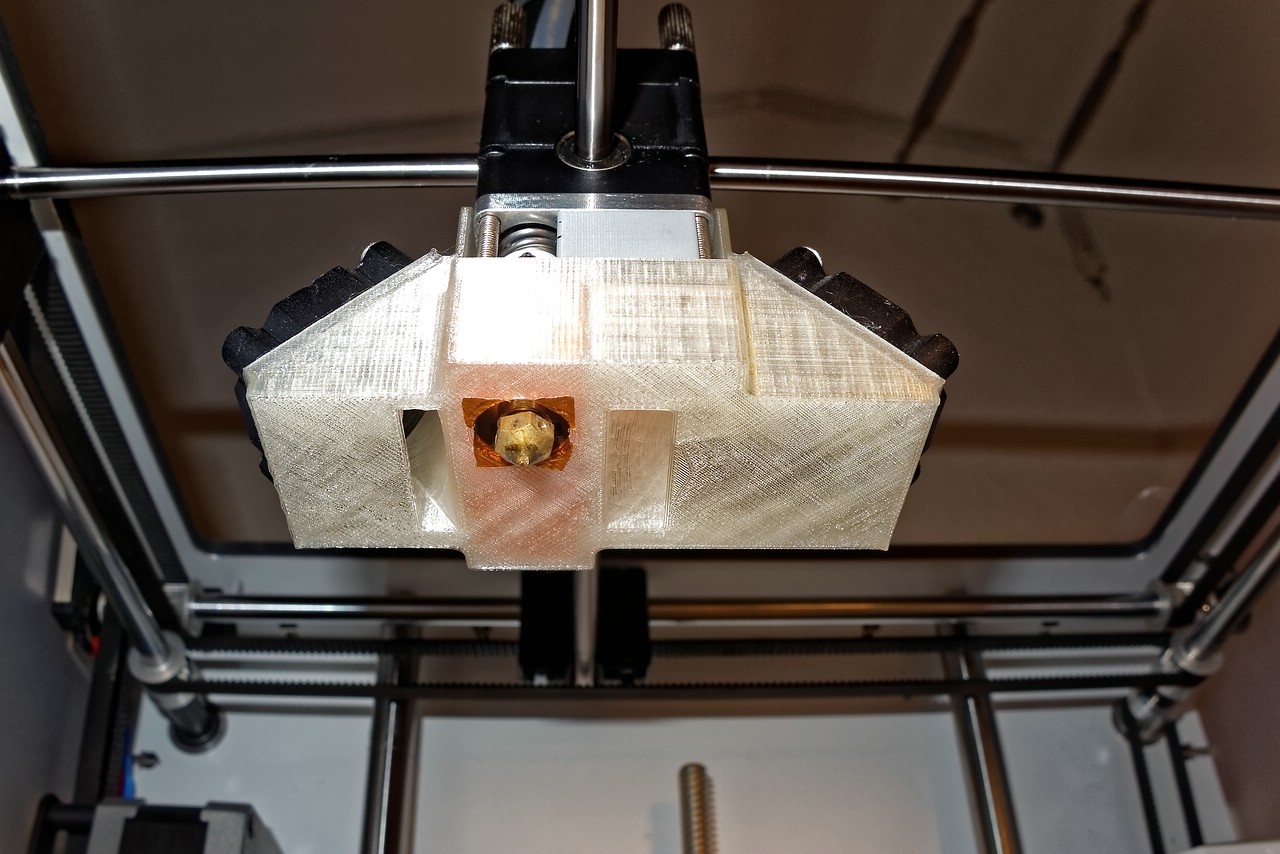
Ultimaker 2 Airflow Optimized Cooler for Olsson Block
myminifactory
Ultimaker 2 Airflow Optimized Cooler for Olsson Block Aim: Design a 3D printable cooling air flow guide for the Ultimaker 2 with an Olsson hotend. I was inspired by other designs and started analyzing them, considering mechanics and airflow. All known designs were difficult to print or lacked airflow guidance, so I decided to optimize both issues. This design is intended for printing with a 0.4mm nozzle and a layer height of 0.1mm. The ideal infill percentage ranges from 15-20%, with two perimeters, 0.5mm layers for the bottom (1*0.2mm and 3*0.1mm), and five top layers depending on your printer. Design and Software-Based Evaluation: 1. Base design of printhead for analysis and fit 2. First rough design for print to validate fit with basic simulation 3. Added a 0.5mm heat shield 4. Increased size of right outlet by 2mm to reduce airspeed 5. Decreased size to half, added an air director to the right outlet, and added air guides to both outlets 6. Fine resolution simulation to verify coarse results from step 5; minor adaptions were made to the main air inlet, followed by another high-resolution run 7. Simulation with "real fans" - counter pressure-related airflow with spin from the fan 8. ... print, assemble, and test Required Parts for Assembly: 4* M3x6 or M3x8 screw Self-adhesive copper and Kapton tape or any other isolator Assembly: Print the design. Add 1-3 layers of self-adhesive copper tape to the inner sides (facing the heater block and hotend), covered by a layer of Kapton tape. Keep copper slices as big as possible, as they are heat conductors to keep air guide material cool. Use other heat-blocking composites if necessary, ensuring a little air gap between the heater block and isolator for airflow. To make it easy: Take a copper tape with a width of 5cm, glue Kapton tape on it, add another layer of copper tape, and cover with another layer of Kapton tape. Print out the cut layout, lay it above, and cut with a scalpel or sharp knife. Glue the parts inside the cooler and cut out holes with a scalpel. Results: - I can run the fan at 80-90%, where before it was only possible to run at 40-50% without a heater error. - The material cools faster than before. - Bridges and overhangs work much better. - Cooler (PLA) does not melt or deform with a 225° Hotend temperature. Interesting Points: * While investigating the design, I found a major flaw in other designs: they placed the nozzle in the center of the airflow. This leads to zero horizontal flow but maximizes pressure at the point of the nozzle and causes maximum backflow of air around the nozzle to the heater block. * Other designs use no air guides to direct airflow, leading to maximum pressure at the nozzle with almost no airflow and no cooling of hot material below the nozzle. Thanks: Many thanks to a friend who invested time teaching me how to run flow analysis and allowed me to use their environment for simulations. Thanks also to all those providing feedback and ideas during the design phase, as well as those giving future feedback to improve the design.
With this file you will be able to print Ultimaker 2 Airflow Optimized Cooler for Olsson Block with your 3D printer. Click on the button and save the file on your computer to work, edit or customize your design. You can also find more 3D designs for printers on Ultimaker 2 Airflow Optimized Cooler for Olsson Block.
